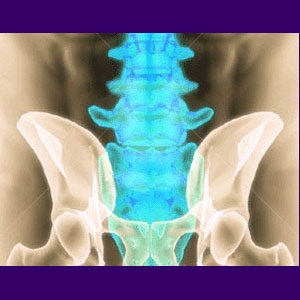
Lower back exercises are one conservative method of treating lumbar back pain using fitness activities, stretches or physical therapy. Exercises can be done with a professional fitness trainer or physical therapist, but can also be done by virtually any patient at home. While exercise is advised as part of a general health maintenance program, it is usually not a stand alone cure for any variety of lower back pain.
The lower back and buttocks get a constant workout just from many of the activities that most people take for granted. Standing, sitting upright and virtually any type of physical movement of the legs will provide exercise to the low back structures. However, some patients find targeted regional toning and strength training to help them overcome pain, prevent injury or rehabilitate trauma in the lumbar spine. It is these patients who stand to gain the most from activities which focus on the low back.
Best Indications for Lower Back Exercises
Back exercises will help to develop core muscle strength and increase flexibility in the region. The lower back is already one of the strongest parts of the body, since the postural muscles in the lumbar anatomy must be incredibly strong in order to facilitate simple exertions such as standing and walking. Specific exercises can increase this muscular strength, but will not normally cure painful conditions due to spinal abnormalities.
Patients who experience back muscle pain are often advised to integrate exercise into their rehabilitation program when recovering from a muscular back injury. Likewise, patients who have undergone spinal surgery are always placed into a rehabilitative physical therapy program to get them back to full functionality after the procedure.
Pain Relief from Lower Back Exercises
Physical therapy is one of the oldest and most respected facets of the back pain industry. However, it is not exactly clear to many doctors or patients how exercise is supposed to help to soothe pain due to any of the common structural causations for which it is prescribed, such as spinal stenosis, herniated discs or pinched nerves.
Many patients with diagnosed spinal abnormalities might enjoy symptomatic relief from their pain during exercise therapy. If the actual cause of the pain matched the diagnosis, this would rarely occur… a fact which supports the theory that there are an overwhelming number of misdiagnosed patients in the healthcare system.
The actual source of pain relief for some of these patients is the increased oxygenation provided to the painful area of the back. When increased circulation provides measurable symptomatic reduction, I am almost always inclined to see the actual cause of the pain as being ischemic, not structural. This is just common sense.
Examples of Lumbar Back Exercises
Some of the best exercises for the lower back region include abdominal crunches, rowing, resistance training and many specialized programs such as: yoga, Pilates or tai chi. It is crucial to understand correct form and posture when doing any type of exercise and this is especially true when working out with weights.
Take the time to learn about exercising safely by consulting a qualified trainer or therapist. There are tons of excellent workout programs available in health clubs and even on DVD. You can mix and match your chosen exercise routines to build diversity and interest factor into your training regimen.
As always, do not work out when you are in pain. This can lead to an escalation or perpetuation of the agonizing condition and might even do permanent damage to your back. If you ever have any questions or concerns about lumbar exercises, be sure to ask your physician for personal guidance.
Overview of Lower Back Exercises
As a professional martial artist and fitness trainer, I have always loved exercise and recognized its tremendous value towards building a healthy mind and body. However, when many of my doctors advised using it as a treatment for my horrific back pain, I was a bit bewildered. I understood exactly how exercise worked and its effects on the body. I did not understand how it was going to have any hope of curing my herniated discs or fixing my degenerative disc disease.
When I pressed these doctors for an explanation which made sense, I discovered that they typically did not have any real understanding of why exercise was prescribed either! This was a real shock at the time, but now I find this to be business as usual in the often convoluted and contrived dorsalgia treatment sector.
Always remember to be an informed patient. Ask questions and do not take advice blindly. Talk to your doctor about what their prescribed exercises are intended to do and make sure they can answer your questions in a way which is logical. My advice is to work-out for good health, but do not trust exercise to be the miracle you have dreamed about in your quest for back pain relief.
On the flip side, if exercise does cure your pain, it is terrific! No drugs, no surgery and no side effects. A patient could never ask for a better cure opportunity than this!





